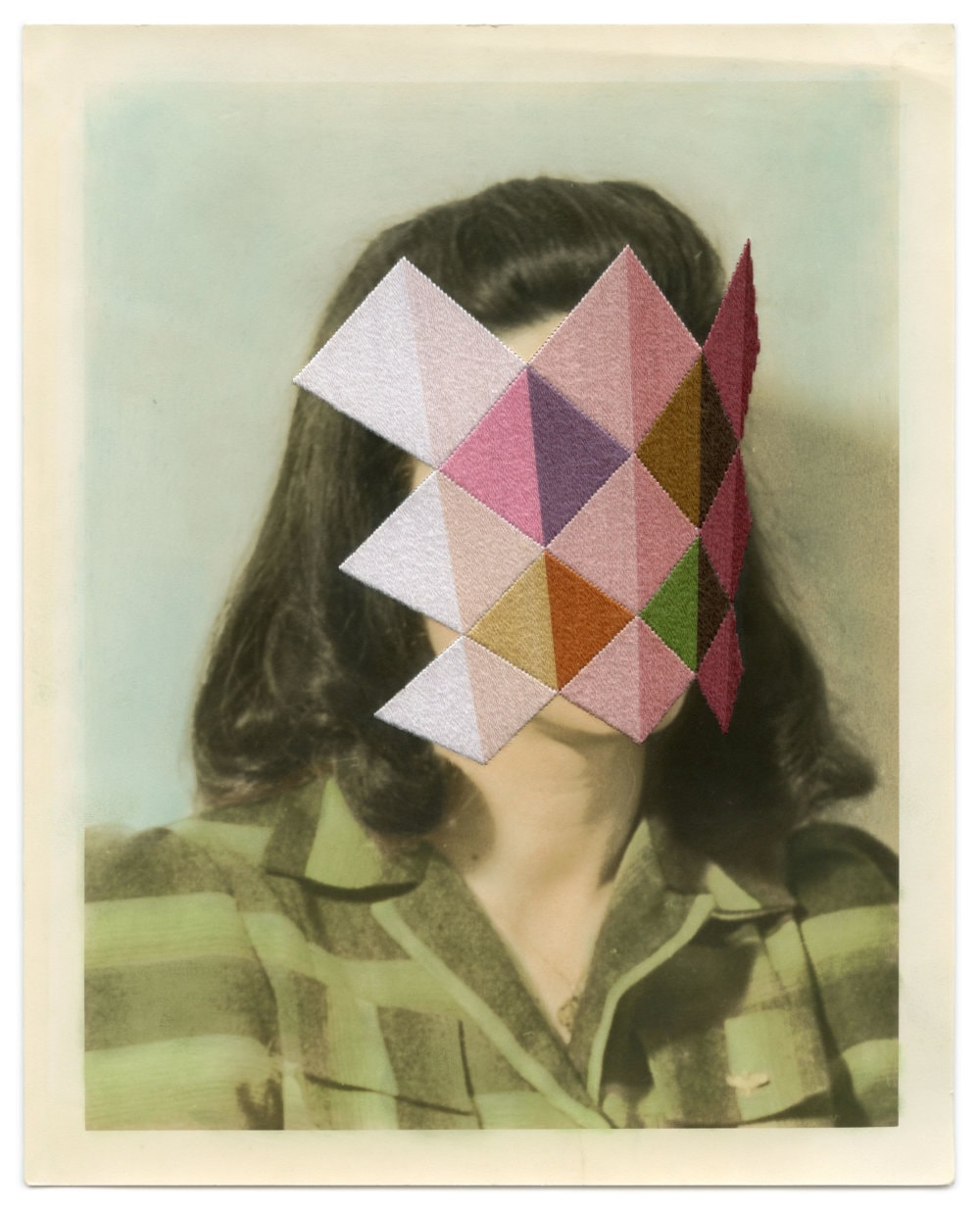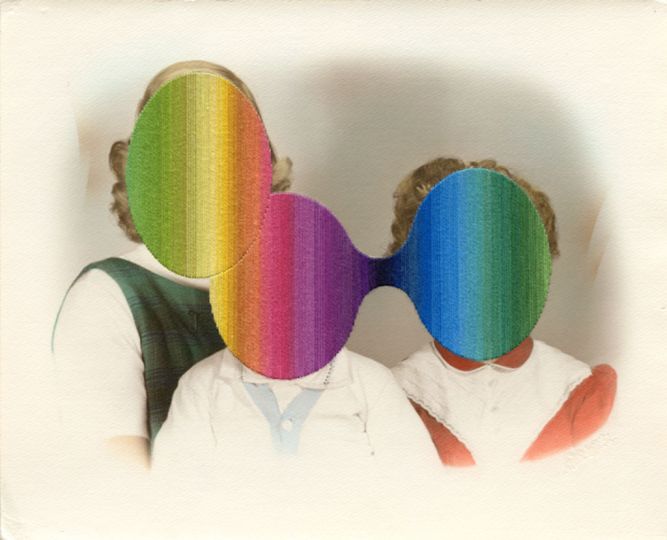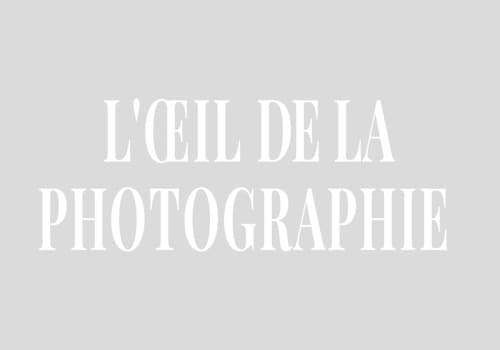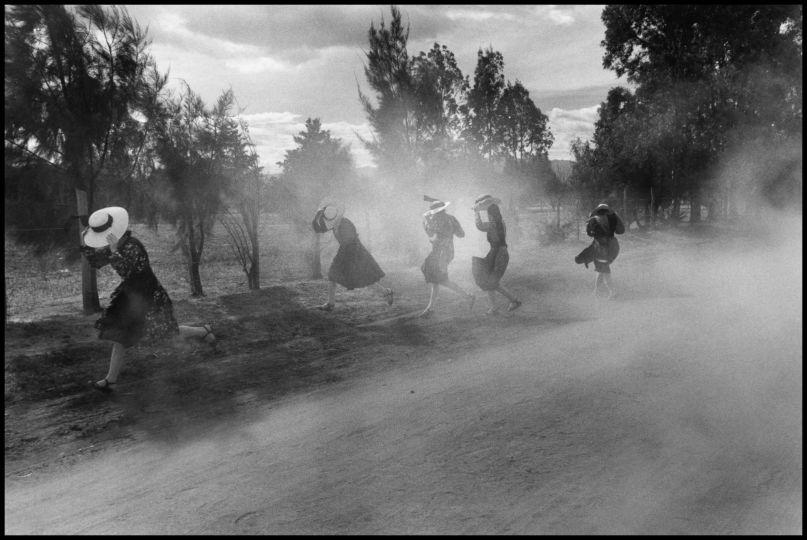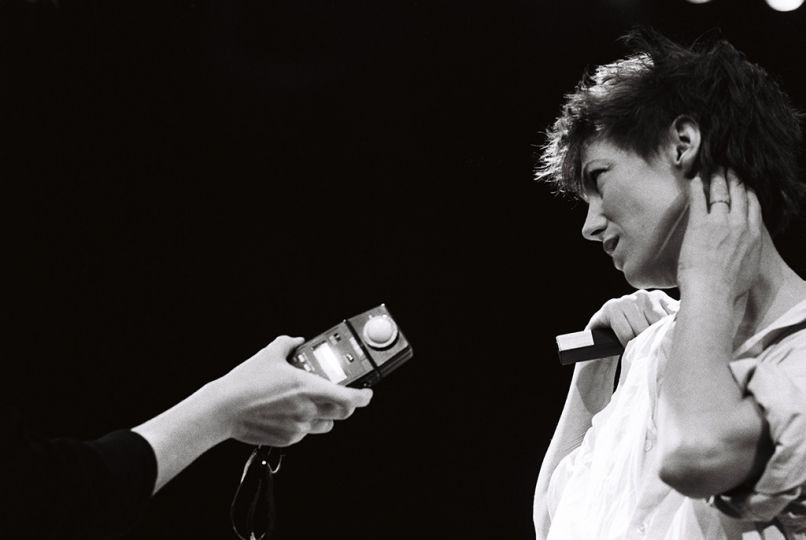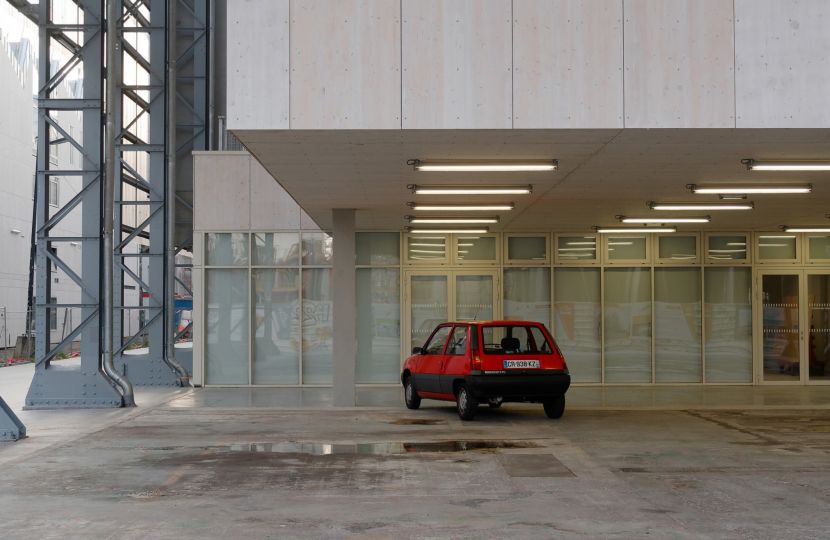Centred around the appropriation and alteration of found images, Julie Cockburn’s work appears familiar and often nostalgic. Her source materials, such as 1940s and 50s studio portrait photographs of unknown sitters, are given new significance through the skilful manipulation of their surfaces. By reassembling, stitching into and over-painting the original photographs with geometric patterns and imaginative gestural doodles, her process can be described as entering a ‘conversation’ with the history of the image, each act of embellishment or reconfiguration an attempt to “excavate them, physically and emotionally”.
The title of the present exhibition derives from the proverb ‘All work and no play makes Jack a dull boy’, (a reference also found in the literature and films of Jack Kerouac, James Joyce, Alfred Hitchcock and Stanley Kubrick), which makes the case that a healthy dose of recreation is necessary to maintain personal equilibrium and stave off boredom. Comprising of a new series of meticulously produced hand-altered found photographs alongside several sculptural works constructed using materials associated with play (such as Work Life Balance, assembled from plastic game parts and patinated bronze, and The Playground, a found book jacket worked over with plasticine and acrylic paint), the exhibition explores the dual processes of labour and experimentation, vocation and avocation, within Cockburn’s practice.
Cockburn’s desire to ‘play’ in the studio can be considered a counterpoint to the intense daily labour involved in creating her intricate embroidery. Many hours of manual work can be traced through the journey of each embroidered stitch, accumulating, much like the overlapping brush-strokes and marks in her paintings or the visible incisions in her hand-cut collages, as a conflation of time, past and present. Play, in contrast, takes place at the end of the day, a period of clarity following focused attention when the mind is allowed to wander and bold material experiments take place, using alternative and often unusual means, such as sketching with plasticine. This she describes as an “irresistible, rebellious urge to discover whatever the imagination has to offer, through curiosity and risk-taking.” Recreation (an activity associated with enjoyment) can also be defined as a process of remaking or re-enacting, relating further to Cockburn’s methods of cutting, splicing and otherwise interrupting the original image in order to reveal what she terms as the ‘other’ in these found items, or “that which is not immediately apparent”.
Cockburn’s relationship to craft and the ‘handmade’ can be seen as a rejection of the processes and ideals of generic mass-production, rendering physically worn objects precious again, and freighted with different values. The work addresses ideas about gender (in particular the gendered medium of embroidery and notions of domesticity), of conflict between modernity and history, and the changing associations we have with photography in a digital age. Through a familiar pattern of responses developed over time, defined and categorised by Cockburn as spots, kaleidoscopes, Venn diagrams, harlequins, flower heads, and cages, Cockburn’s imaginative sculptural interventions deliver unknown photographs and objects out of obscurity and into a new dialogue with the present.
https://www.flowersgallery.com/exhibitions/view/julie-cockburn-1
Information
Flowers Gallery
21 Cork Street London W1S 3LZ United Kingdom
September 06, 2017 to September 30, 2017

